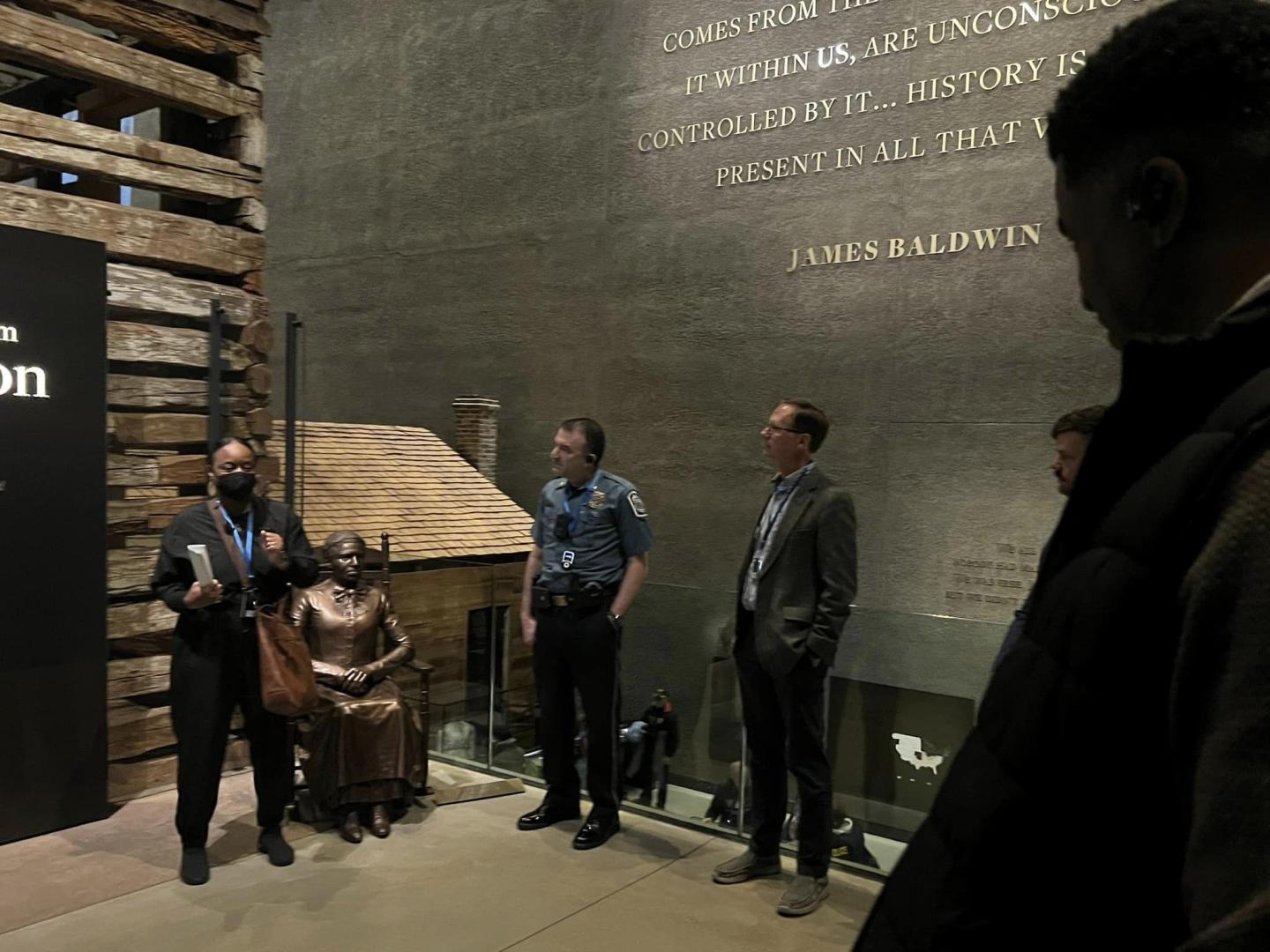I spent the day Friday at the National Museum of African American History and Culture with my Chief of Staff, Chief Administrative Officer, Chief of Police, Sheriff, Annapolis Police Chief, and a group of police officers of various ranks. We took the same tour, led by the same two historians - Dr. Sharita Jacobs-Thompson and Dr. Bernie Demczuk - that every sworn Anne Arundel County police officer does this year as part of their in-service training.
The museum is an immersion in Black history, from Africa to enslavement to rebellion to emancipation to reconstruction to institutional segregation to the civil rights movement to modern Black culture, with a lot of stops along the way. Visitors are asked to put themselves into the time, into the lives, and into the skin of Black Americans.
I am a white descendant of enslavers, but I’ve long since taken sides against my forefathers. I envision myself fully engaged throughout history on the side of Black justice. The museum makes that easy.
I first toured the museum with my wife and twin boys when they were ten, but Friday’s tour had a different purpose. Instead of wondering how the information was landing with my kids, I wondered about the impact on police officers - white police officers, Black police officers, and officers who are neither.
Would there be anger at injustice? A heightened sense of empathy, or an acknowledgement that a people’s trauma can transcend generations? Would there be a moment in the museum’s telling of history, during the civil rights era or more recent, where an image would trigger a defense in that officer, maybe a sense that the movement for Black empowerment and the badge become incompatible?
Our Chief of Police, Amal Awad, an African American woman with a long proud career as an officer, understands how complicated the issues of race, politics, and policing are in America today. She called on these two historians to usher her officers through this museum, not because it will make the issues simpler, but because she trusts the people she leads to listen, to think deeply, and to grow, and she believes that the growth will make them better officers.
I agree with Chief Awad, but it’s not only our officers who face challenges and have opportunities to grow. It’s also the police command staff, their attorneys, and me.
Four days before the museum visit, our new Police Accountability Board (PAB) came down hard on the leadership of all the departments that they monitor - Anne Arundel, Annapolis, Sheriff, Community College, and Crofton - for failing to send over to them their complaints of officer misconduct in a timely manner. Chief Awad and Sheriff Sesker were attending the Senate hearing on the first Black nominee to the position of Superintendent of Maryland State Police that night, and Chief Jackson was also at another event, so their staffs handled the Board’s firm request as best they could.
It was a tense meeting. The Board members were well-prepared, with reports from other counties and clear language in county code requiring that the law enforcement agencies share the complaints soon after receiving them. Some on the PAB suggested that failure to comply created an appearance that the departments had something to hide.
The next day, the Anne Arundel Police command staff reported to their Chief that it hadn’t gone well. She watched the video, she read the code, and she went back to her staff and encouraged them to put themselves in the shoes of the Board. She said they were justified in requiring the information, were doing their jobs as mandated by state and county law, and told them that Anne Arundel County Police would deliver for them.
Police Departments have come a long way since the 1980’s when I was a community organizer in Black and Latino Chicago neighborhoods. Anne Arundel Police were early and thorough adopters of President Obama’s post-Ferguson 21st Century Policing pillars. Some officers have had to find other lines of work when they’ve failed to meet today’s standards, and body-worn cameras are a new tool that is taking our officers to a higher standard still.
But residents want transparency. They want it in policing and they want it throughout government. They want officers like the ones who killed Tyre Nichols and George Floyd removed, but they also want more police patrols in their neighborhoods, just like they did in Chicago forty years ago. They want to be protected.
Trust takes time to build, but can be lost in an instant. Building trust in a place where laws were written by proud white supremacists for most of our history - and police officers were used to enforce them - takes very intentional work.
I am damn glad that in Anne Arundel County we are doing that work.
Until next week…
Steuart Pittman
Anne Arundel County Executive

